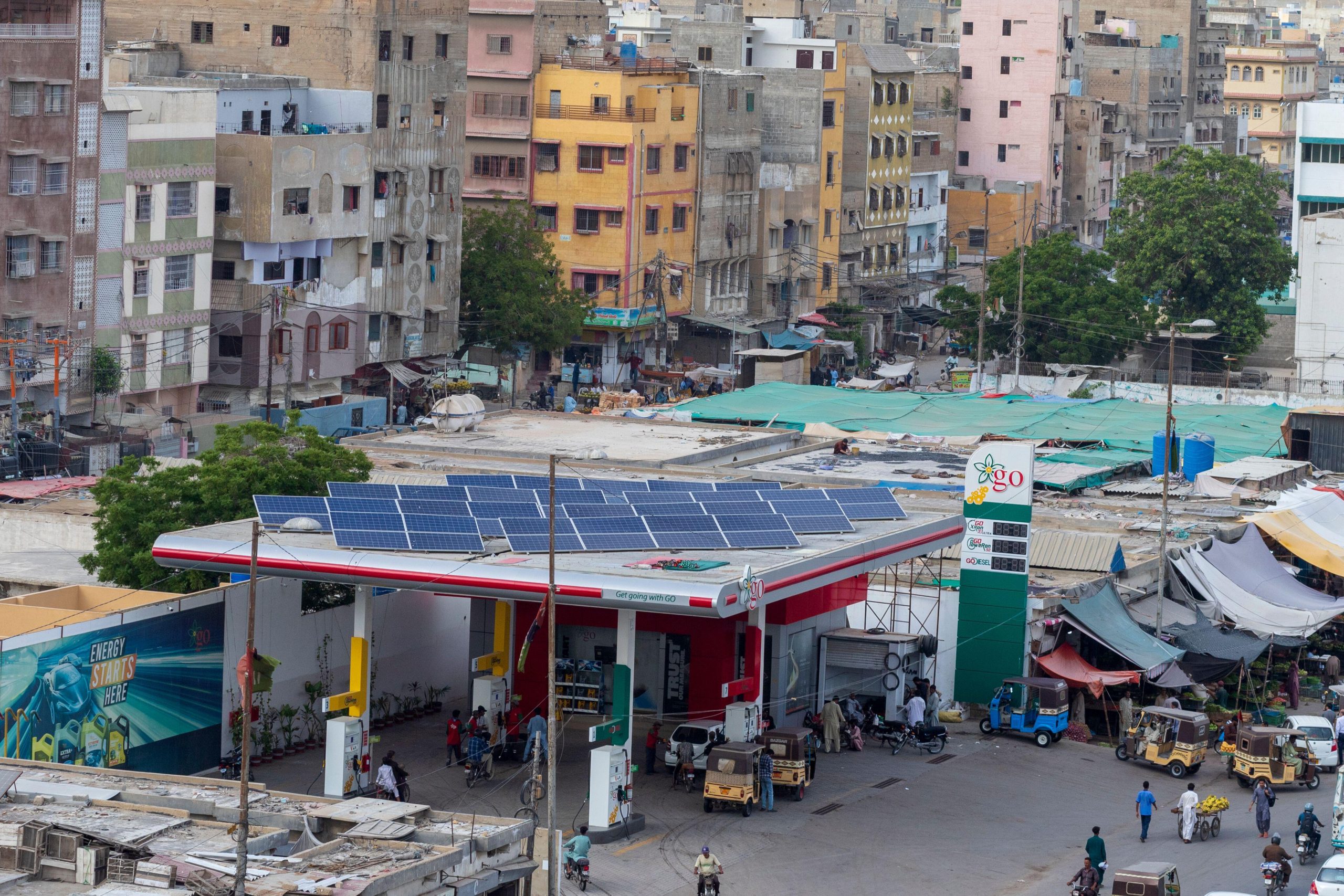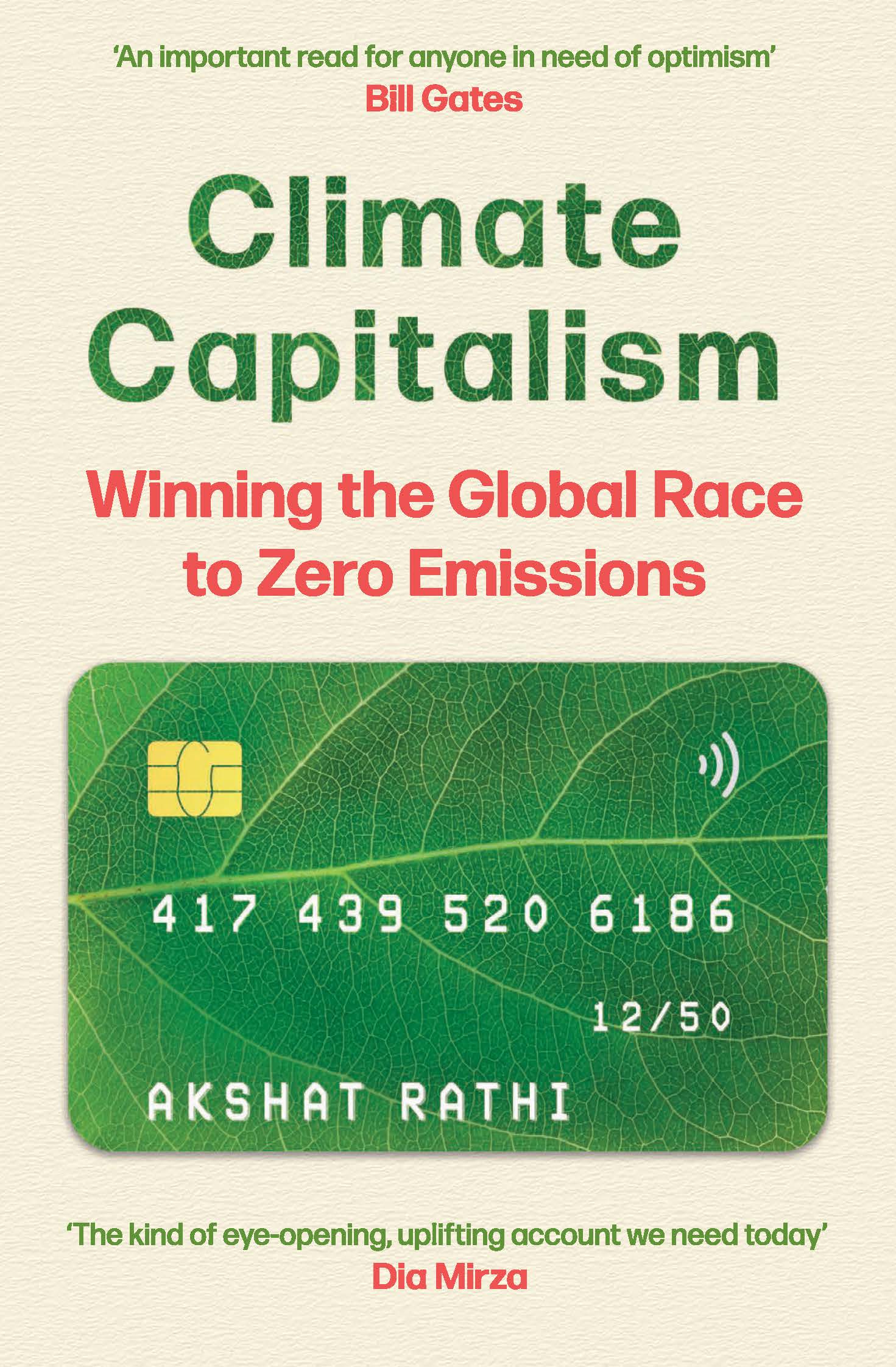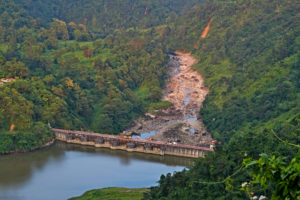Akshat Rathi’s Climate Capitalism: Winning the Global Race to Zero Emissions, is a book heavy on hope, data and examples. Despite its vast scope – telling the story of climate entrepreneurs from China, India, the US and much of the developed world – Rathi presents an engaging read of all that is going right in the battle with climate change.
The author’s training as an engineer allows him to dive into interesting technical aspects, such as the composition of the newest batteries, while his journalistic experience shows as he shines a light on interesting details and anecdotes – such as billionaire Bill Gates “wearing a too-short blue tie and satisfied grin”, at COP21 in 2015, when the Paris Agreement was adopted.
In twelve concise chapters, and running just over 200 pages, Rathi’s effort is to show that “business as usual” no longer holds in a world that is looking at a looming set of climate catastrophes. Instead, key figures in business, government and international bureaucracies such as the International Energy Agency are disrupting the status quo, finding new ways to make profit, while lowering global emissions.
Is it truly climate capitalism?
The title of the book, though, is somewhat misleading. While Rathi focuses almost exclusively on businesses and entrepreneurs, throughout the book it is governmental action that looms over everything. In the second chapter, Rathi explores former science minister Wan Gang’s role in convincing China to make the leap into electric vehicles, noting: “While [Elon] Musk fought Wall Street’s scepticism and benefited from waves of government subsidies to keep Tesla afloat through turbulent periods, Wan has shown how policy done right can drive technological disruption not just in China but worldwide.” Every one of Rathi’s examples are similar. They might have a business person at the centre of the story, whether it is of the Indian green energy entrepreneur, Sumant Sinha, or even of the tech billionaire Bill Gates, but the issues are about government policies. For example, the renewable energy goals and subsidies of the Indian government, or the Inflation Reduction Act passed by US President Joe Biden in 2022.
It is only in the penultimate chapter, on Unilever’s transformation under the leadership of its CEO Paul Polman between 2009 and 2019, that the business case for climate change is really made. Thomas Lingard, Unilever’s global sustainability director, argues that global sustainability rests on three pillars: increasing consumer demand for sustainably sourced products; the cost-saving benefits from energy efficiency and investing in renewables; and the recognition that climate change impacts will inevitably add costs to a company’s global supply chains, making sustainability investments a wise and lucrative long-term strategy.
Why are businesses not changing as much as they should?
Given the benefits, why are more companies not going down this path? Rathi attributes the reluctance of more companies to embrace climate-positive practices to economist Milton Friedman’s 1970 New York Times essay. In it, Friedman argued that businesses’ sole responsibility is profit-making, while any social contributions should be undertaken individually with the profits earned. Due to the book’s brevity, Rathi doesn’t delve into the intricacies of this argument.
It might, though, be beneficial to read Rathi’s book alongside When McKinsey Comes to Town: The Hidden Influence of the World’s Most Powerful Consulting Firm, by Walt Bogdanich and Michael Forsythe. Published in 2022, the book delivers an in-depth examination of how Milton’s shareholder-centric philosophy can harm social welfare for quick profits.
When oil companies enjoy substantial returns (20-50%) compared to renewables (5-10%), it is hard to sell shareholders on the idea that they should make less profits in the short-term for longer-term gains. This is the climate capitalism challenge. The shift will only occur when government regulations hold carbon-emitting companies accountable for emission costs. The core issue, as Rathi identifies, is the absence of accounting for “negative externalities” – costs not reflected in profit-and-loss statements. Currently, carbon emitters don’t pay for emissions; instead, those facing climate impacts foot the bill, revealing the hidden toll behind these profits.
The future is in developing countries
This is why it is disappointing that the only developing countries covered are China and India, and neither in great detail. Developed nations grapple with taxing the rich or holding them accountable. In contrast, developing countries, whether in South Asia, Southeast Asia, Africa, or South America, face financial constraints and escalating climate impacts. They must negotiate both growth and lower emissions. This critical aspect, representing both the future and its associated challenges, is insufficiently explored. Rathi is dismissive of India, China, and the US advocating for ‘phase down’ instead of ‘phase out’ of fossil fuel subsidies and coal during COP26 in 2021, calling it “seemingly silly stuff … at COP meetings”. But this is precisely where the challenge is.
In his book, Rathi notes that the IEA had stated in its 2021 report that, “if the world is serious about keeping warming below 1.5C, we need to stop the development of new infrastructure to extract fossil fuels. That means no new coal, oil, and gas fields from now on.” The Indian coal minister, though, announced on December 18, 2023 that domestic coal production was set to increase 6-7% annually and reach approximately 1.5 billion tonnes by 2029-30. The IEA is backed by the Organisation for Economic Co-operation and Development (OECD) – mostly rich countries, but the choices for other countries – despite the known costs – will be based on their own calculations.
Rathi’s first book offers a broad overview. Hopefully his next one will offer a more detailed examination. For example, looking beyond Bill Gates as a climate lobbyist to highlight his status as the largest landowner in the US. Considering agriculture accounts for 10% of US emissions, this seems relevant. Climate capitalism, as it now exists, does not yet align with the optimistic portrayal Rathi presents. The devil, as always, is in the detail.











